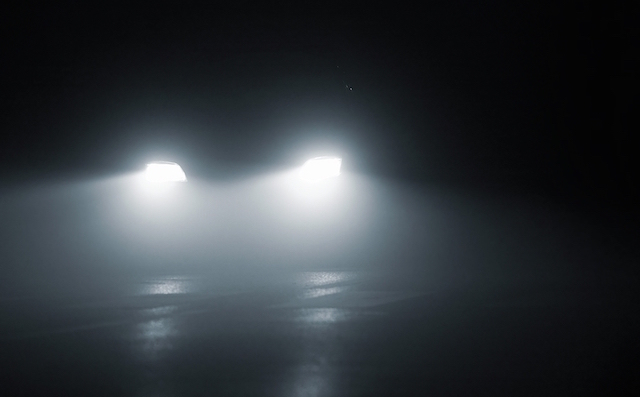
The headlights on many popular SUVs are inadequate, says American motoring watchdog the Insurance Institute for Highway Safety (IIHS).
It tested 21 models and only four received an ‘acceptable’ rating. The headlights in the other 17 were either ‘poor’ or ‘marginable.’ See the video below.
The best performing headlights belonged to the Mazda CX-3, said the IIHS. The SUV with the worst headlights was the Honda HR-V.
The ratings:
Acceptable: Ford Escape, Honda CR-V, Hyundai Tucson, Mazda CX-3.
Marginal: BMW X1, Mazda CX-5, Mitsubishi Outlander, Toyota RAV4, Volkswagen Tiguan.
Poor: Audi Q3, Buick Encore, Chevrolet/Holden Trax, Fiat 500X, Honda HR-V, Jeep Renegade, Jeep Patriot, Jeep Wrangler, Kia Sportage, Nissan Rogue (X-Trail), Mitsubishi Outlander Sport, Subaru Forester.
IIHS engineers use a special device to measure how far the light is projected as the vehicle is driven in five different situations: traveling straight, a sharp right curve, a sharp left curve, a gradual right curve, and a gradual left curve.
The IIHS also evaluates headlight glare from low beams and gives vehicles with high-beam assist brownie points. Seventeen of the SUVs produced ‘unacceptable glare,’ which prevented three vehicles from receiving anything higher than a rating of acceptable.
“Glare issues are usually a result of poorly aimed headlights,” said IIHS senior research engineer Matthew Brumbelow. He believes headlights in crossovers and SUVs should be aimed lower since they’re positioned higher than car headlights.
Among the 21 SUVs, there were 47 different headlight combinations, which include LED lamps, high-intensity discharge (HID), and curve-adaptive systems. Despite the modern, more expensive lighting systems, the SUVs have worse headlights than the midsized cars the IIHS tested earlier this year. The best of those was the Toyota Prius.
The IIHS said the type of headlight doesn’t guarantee the best illumination. “Manufacturers aren’t paying enough attention to the actual on-road performance of this basic equipment,” said Brumbelow.
It’s an industry-wide problem that deserves attention considering about half of traffic deaths occur in the dark or around dawn or dusk, the IIHS argues.
The price of the vehicle didn’t make a difference, nor did advanced lighting technology in the vehicles. More modern lighting types, including LED lamps, and curve-adaptive systems, which swivel in the direction of steering, also are no guarantee of good performance, according to IIHS.
High-beam assist, which automatically switches between high and low beams based on the presence of other vehicles, was the only type of lighting technology that IIHS deemed valuable.
IIHS says its rating system doesn’t favor one kind of lighting technology over the other. Instead, its tests focus on the amount of usable light provided by low beams and high beams.
